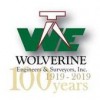
ALTA/NSPS surveys are the backbone of the commercial lending industry. These standards, developed in 1962, are continually updated by the American Land Title Association (ALTA) and the National Society of Professional Surveyors (NSPS). They provide the minimum requirements for surveys that title agencies reference to remove standard survey exceptions for title insurance policies. Using these standards, the surveys show the retraced boundary of the parcel along with improvements and easements (exceptions) that are on or near the described parcel as referenced in the parcel deed.
These are common questions from land-owners that in many cases don't have an easy answer. As surveyors, we are charged with offering an opinion as to the location of a parcel boundary line based on the description within the deed and evidence as located in the field. The detailed analysis of field evidence (monuments), deed descriptions and record evidence all contribute to the location marked in the field representing the parcel line. That information is often used to place improvements on a parcel, or serve as evidence in civil proceedings regarding title disputes or boundary agreements.
Surveys for commercial sites vary from project to project. Many consist of a combination of boundary retracements, wetland mapping, floodplain mapping, easement retracement and description creation, and utility locations. But they can also involve more complicated matters. In some cases, tree and building heights are required (e.g. for solar arrays, or in close proximity to airports) and detailed applications of parcel zoning must be completed to determine the current and future use. The majority of commercial surveys are for site development where we deploy numerous mapping technics including ground-based mapping (GPS/total station/scanning), aerial mapping (photogrammetry/LIDAR), or river and lake mapping which requires sounding and water line vegetation.
Similar Businesses



